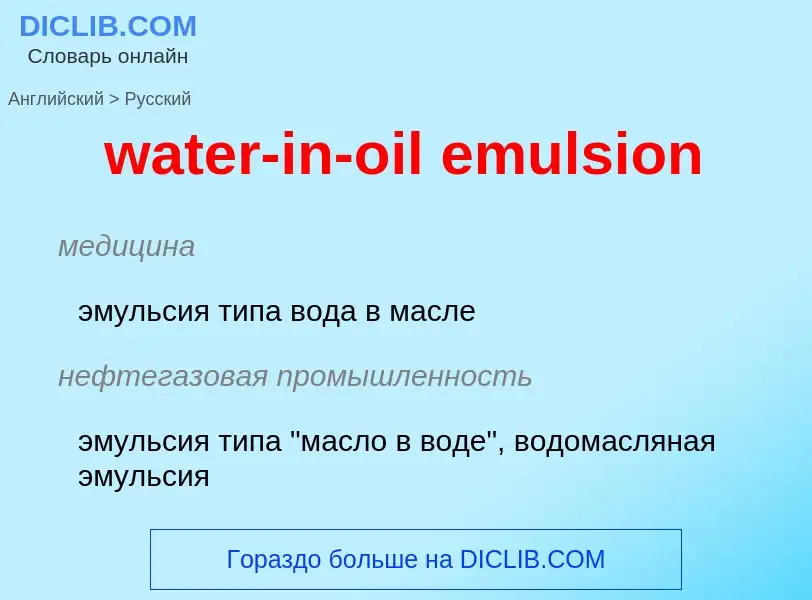Traduzione e analisi delle parole tramite l'intelligenza artificiale ChatGPT
In questa pagina puoi ottenere un'analisi dettagliata di una parola o frase, prodotta utilizzando la migliore tecnologia di intelligenza artificiale fino ad oggi:
- come viene usata la parola
- frequenza di utilizzo
- è usato più spesso nel discorso orale o scritto
- opzioni di traduzione delle parole
- esempi di utilizzo (varie frasi con traduzione)
- etimologia
water-in-oil emulsion - traduzione in russo
медицина
эмульсия типа вода в масле
нефтегазовая промышленность
эмульсия типа "масло в воде", водомасляная эмульсия
эмульсия типа "вода в нефти", водонефтяная эмульсия
медицина
эмульсия типа масло в воде
нефтегазовая промышленность
эмульсия типа "нефть в воде"
эмульсия типа "масло в воде"
Wikipedia
An emulsion is a mixture of two or more liquids that are normally immiscible (unmixable or unblendable) owing to liquid-liquid phase separation. Emulsions are part of a more general class of two-phase systems of matter called colloids. Although the terms colloid and emulsion are sometimes used interchangeably, emulsion should be used when both phases, dispersed and continuous, are liquids. In an emulsion, one liquid (the dispersed phase) is dispersed in the other (the continuous phase). Examples of emulsions include vinaigrettes, homogenized milk, liquid biomolecular condensates, and some cutting fluids for metal working.
Two liquids can form different types of emulsions. As an example, oil and water can form, first, an oil-in-water emulsion, in which the oil is the dispersed phase, and water is the continuous phase. Second, they can form a water-in-oil emulsion, in which water is the dispersed phase and oil is the continuous phase. Multiple emulsions are also possible, including a "water-in-oil-in-water" emulsion and an "oil-in-water-in-oil" emulsion.
Emulsions, being liquids, do not exhibit a static internal structure. The droplets dispersed in the continuous phase (sometimes referred to as the "dispersion medium") are usually assumed to be statistically distributed to produce roughly spherical droplets.
The term "emulsion" is also used to refer to the photo-sensitive side of photographic film. Such a photographic emulsion consists of silver halide colloidal particles dispersed in a gelatin matrix. Nuclear emulsions are similar to photographic emulsions, except that they are used in particle physics to detect high-energy elementary particles.

![table salt]], an egg (for [[yolk]]) and a [[lemon]] (for lemon juice). The oil and water in the egg yolk do not mix, while the [[lecithin]] in the yolk serves as an emulsifier, allowing the two to be blended together. table salt]], an egg (for [[yolk]]) and a [[lemon]] (for lemon juice). The oil and water in the egg yolk do not mix, while the [[lecithin]] in the yolk serves as an emulsifier, allowing the two to be blended together.](https://commons.wikimedia.org/wiki/Special:FilePath/Ingredients maonesa.jpg?width=200)
